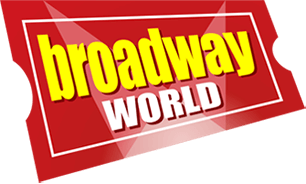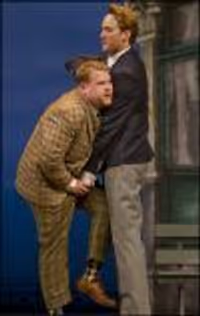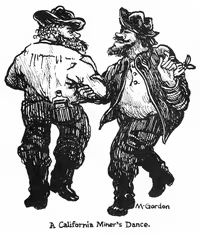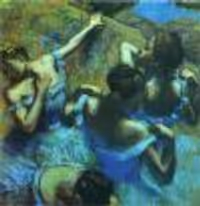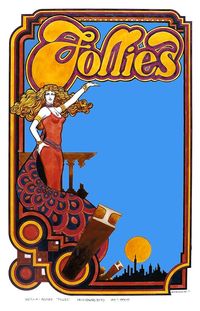Tick Tock- Company
#125Tick Tock- Company
Posted: 7/2/13 at 5:24pm
I love the scene. And I remember when I stumbled upon what is supposedly the actual park it's based on. It really is a bit of magic in the East 50's.
Can I just say that I never like Another Hundred People in the stage show because of all the breaks for scenes? That's heresy, right?
#126Tick Tock- Company
Posted: 7/2/13 at 5:25pm
I remember the short, sad simplicity of the original version of the scene. Personally, I find the new version redundant and (worse) sentimental.
The original script of Company really caught the hard jagged kind of sophistication that New York stood for in the late 60s-early 70s. The new scene is an anachronism - sweet, neat, and suburban.
And that pocket park (if it's the one on 51st that most people think it's supposed to be) wasn't built until 1971 - a year after Company opened. (Not that it means anything, but the park is younger than the show.)
Updated On: 7/2/13 at 05:25 PM
#127Tick Tock- Company
Posted: 7/2/13 at 5:26pm
Also, it's been posted before, but McKechnie did perform the Bennett choreography at the anniversary concert and you can see it here: http://www.youtube.com/watch?v=dhzU49_IO2o
Unfortunately she was having her health issues at the time, s sorta "marks" the dance, but still great to see. (I know she's one of the few original cast members who stayed with the tour and so is in the Lincoln Center video of the original tour filmed in DC--something I'm still dying to see.)
#128Tick Tock- Company
Posted: 7/2/13 at 5:28pm
It's too bad Donna McKechnie didn't get a chance to do that scene.
As they say in Night Music, "it would have been wonderful."
blocked: logan2, Diamonds3, Hamilton22
#129Tick Tock- Company
Posted: 7/2/13 at 5:29pmNewintown, that's an interesting point, and certainly fair. I still love the scene, but your argument makes a lot of sense to me. (To be fair, even the minor revisions seem t try to make Company less of a hard, some might say cold show--which I'm not sure works.)
#130Tick Tock- Company
Posted: 7/2/13 at 6:31pm
The revisions have moved the show's focus HARD towards Bobby's relationship issues. Looking at the original script and remembering that it was in 1971 changes the interpretation of the show's central issue to the birthday and the age being WAY more central then they became in later versions.
Bobby is turning thirty-five, and is the youngest of his friends. Much is made of the number thirty-five, and the implication is, essentially, that Bobby has just become middle-aged. Bobby ought to have a woman, Bobby isn't as young as he used to be, Bobby should settle down and be, well... older.
The change in theatrical performance styles and training, as well as the changes in lifestyle and life expectancy, have both made this version of the show's intent rather harder to play. People are significantly "younger" at thirty-five than they used to be, for one. The location of middle age and "getting old" has moved from late thirties through forties and now seems to be settling at mid-fifties, especially for the affluent. Further complicating things are the voices of our generation, trained and techniqued and influenced by a hundred years of popular music. Voices sound younger, brighter. When Larry Kert or Dean Jones sang Bobby, they sounded like a middle aged man. For lack of a better word, they were thick, stout voices. Aged and solid and masculine. Just like the way the uniquely sharp-toned voice with a more pronounced New-York-Jewish inflection was the voice of the "Women of Broadway" in decades past, but has now gone to the wayside, the voice of the Man of a Certain Age has more or less gone away too.
#131Tick Tock- Company
Posted: 7/2/13 at 7:02pm
Wonderful insight, darquegk. I really appreciate it.
And it's great food for thought.
blocked: logan2, Diamonds3, Hamilton22
#132Tick Tock- Company
Posted: 7/2/13 at 7:05pmI've mentioned in a few previous Company threads that if you want to cast a "traditional 1971 Bobby" (or, more specifically, a Robert, as his Bobby appellate is largely a thing of the revision- he was more specifically Robert in conversation in the original), you need a man ten to fifteen years older than Bobby actually is. Jon Hamm conveys the sense of solid, masculine gravitas and "stoutness of voice" that one would expect of 1971 Bobby, the same way Harris is the eternally youthful single friend and Esparza the sensitive but withdrawn fellow with a quiet addiction. Neither of them are men whose immediate trouble screams "midlife crisis," the way 1971's Bobby does- but each are instead archetypes of the sort of thirty-five-year-old man one might find in upper-class New York today.
#133Tick Tock- Company
Posted: 7/2/13 at 7:14pm
I've loved this thread since I last posted, excellent thoughts and analyses, everyone! Really great stuff here.
I also want to add that I think it's to the credit of the original core material that it can remain as strong and as potent as ever while being malleable to accommodate the changes that darque just wrote about.
I never saw the original version and am not familiar with how the recent revivals have changed the book, so hearing how it's evolved has been fascinating and illuminating. Thanks for the insights!
#134Tick Tock- Company
Posted: 7/2/13 at 7:15pmWhat Besty said--great post. This is a separate issue, and one discussed here before, but the whole age thing is one reason I never bought the argument that it should be updated to "now" (nevermind that things like the revision's answer machine opening already have dated.)
#135Tick Tock- Company
Posted: 7/2/13 at 7:40pm
I agree that Company taps into a universal passion/concern that is timeless, no matter what fashions dictate.
The details can be modified, reinterpreted, re-imagined, and explored.
But the core of the material is timeless. That's what makes "Company" a classic.
blocked: logan2, Diamonds3, Hamilton22
#136Tick Tock- Company
Posted: 7/2/13 at 8:04pm
I have a question.
Is Company the story of a gay man who is pretending to be straight?
#137Tick Tock- Company
Posted: 7/2/13 at 8:06pmIt's a woman ... pretending to be a man ... pretending to be a woman ...
blocked: logan2, Diamonds3, Hamilton22
#139Tick Tock- Company
Posted: 7/2/13 at 8:07pmThey should have just called it "Closet," 'cause that's what it's really about.
blocked: logan2, Diamonds3, Hamilton22
#140Tick Tock- Company
Posted: 7/2/13 at 8:19pm
BOBBY! CLOSET!
HOMO PANIC HOMO PANIC!
Phone rings, door chimes-
Homophobia!
After Eight
Broadway Legend Joined: 6/5/09
#141Tick Tock- Company
Posted: 7/2/13 at 8:26pm
"Is Company the story of a gay man who is pretending to be straight?"
Good question.
It's more credible than the narrative presented on stage.
#142Tick Tock- Company
Posted: 7/2/13 at 8:43pm
But the core of the material is timeless. That's what makes "Company" a classic.
Larry Kert insisted to everyone I know that when HE played the role, he played the "gay Bobby" subtext. (Sorry, PJ, but you probably know this. I remember he was a favorite of yours (and mine).)
But had that interpretation existed anywhere but Larry's mind, a few message boards and a couple of critics, we wouldn't still be talking about the meaning of the play--no more than we spend much time de-constructing BOYS IN THE BAND, despite the latter's historical importance.
***
Great discussion, guys!
Updated On: 7/2/13 at 08:43 PM
#143Tick Tock- Company
Posted: 7/2/13 at 8:56pm
Eric Schaeffer just directed Company at Signature Theatre in Arlington and Act 1 ended with the Bobby-Amy "I'm the next bride!" scene, dialogue, then Marry Me a Little, then the Bobby-baby party scene with his friends closing in on him. I thought it worked well, but I've only ever seen the show with Marry Me a Little closing Act 1.
I wonder how long before we can have a gay Bobby. Not because he's closeted, but because in 20 or 30 years, gay marriage is legal everywhere and so normal that his being gay isn't an excuse not to be married or settled down anymore.
Wanting life but never knowing how
#144Tick Tock- Company
Posted: 7/2/13 at 9:03pm(Not a comment on the post above. I just decided my comments here were unnecessary.) Updated On: 7/2/13 at 09:03 PM
#145Tick Tock- Company
Posted: 7/2/13 at 9:31pm
This has been a difficult thread to negotiate, so forgive me if these points have already been touched upon. First of all, the dance helps support the abstract and revue-type structure of the original production, long since lost in attempts to make the show more "linear". Secondly, the expressed thoughts of Robert and April throughout are equally important, as hers become more and more romantic and his become more and more objective, to the point of his trying to remember her name (for heaven's sake).
This makes his triumphant cry of "JUNE!" during "Barcelona" (and her quiet response of "April") the payoff of the whole sequence. Without the dance (and dialogue) beforehand, there's no real payoff anymore. At least, not the way there was originally. (It's like replacing the un-responded tap steps in "Side By Side By Side" with a sour kazoo.)
#146Tick Tock- Company
Posted: 7/2/13 at 9:41pm
Those are great points, especially about the dialogue which has not been mentioned here yet.
I admit sometimes it feel like a conspiracy to remove dance fro the relatively few Sondheim shows that feature it in a key way--Bolero D'Amour (which as originally staged visually basically shows the entire theme of Follies) is routinely cut from Follies, etc. If they ever did try a full revision or revival of ANyoneCan Whistle the Cookie CHase would probably go at this rate (I believe the Encores production did cut the "Don't Ballet".)
3bluenight
Stand-by Joined: 8/10/11
#147Tick Tock- Company
Posted: 7/2/13 at 9:50pm
I have loved reading this thread.
I found this on that other site and thought i'd share.
Boston Happily Ever After
#148Tick Tock- Company
Posted: 7/2/13 at 9:51pm
I love MARRY ME A LITTLE and always enjoy hearing it. Ellen Greene was one of the first to sing it in clubs in the 70's, but it was written as a possible ending (as was HAPPILY EVER AFTER) so it does seem out of place where it has been placed because Bobby is not quite that evolved yet and BEING ALIVE is the perfect 11 O Clock decision song.
As for TICK TOCK in the first revival, Rob Marshall spent a lot (too much) time on the opening number, he took a whole tech day to tech it. Nancy Hess and the other female understudies got very little time to rehearse and when she went on for Charlotte (early in the run) she just wasn't ready and they took the easy way out and cut the dance whenever Charlotte was out (which was a lot).
#149Tick Tock- Company
Posted: 7/2/13 at 10:19pmSondheim had Harry Nilsson, the singer-songwriter, record a psychedelic version of "Marry Me A Little" as a Christmas gift to a woman who really liked the song and was upset when it was cut from the show.
Videos
